Treatment for Male Pelvic Pain
Pelvic pain in males varies based on the underlying cause, and several common approaches include-
- Antibiotics: Doctors prescribe it to address urinary tract infections and specific forms of prostatitis.
- Pain Medications: These help alleviate discomfort and pain stemming from pelvic pain.
- Physical Therapy: This intervention aids in alleviating musculoskeletal pain and enhancing pelvic region function.
- Surgery:In more severe instances, surgical procedures may become necessary to manage conditions like testicular torsion or severe prostatitis.
The treatment for pelvic pain in men depends on the specific diagnosis and its severity. It is essential to consult a healthcare professional for an accurate assessment and tailored treatment plan for pain in the pelvic area in men.
Urinary Disorders
1. Prostatitis:
This condition involves inflammation of the prostate gland, resulting in pelvic pain and urination difficulties. The diagnostic criteria for prostatitis encompass:
- Ache in the pelvis, lower back, and genital area
- Distress or soreness through ejaculation
- Feeling sore while urinating
- Rush to urinate
2. Urinary Tract Infection (UTI):
UTIs are infections occurring in any part of the urinary system, including the bladder, urethra, and prostate. They often lead to pelvic pain and discomfort. Diagnostic criteria for UTIs include:
- Strong, constant wish to urinate
- Burning sensation during urination
- Frequent urination with small amounts of urine
- Urine that appears cloudy, dark, bloody, or has a strong smell
Genital Disorders
1. Testicular Pain (Orchalgia):
Testicular pain or discomfort can occur in one or both testicles and may result from various conditions, including testicular torsion, injury, or infection. Symptoms often include:
- Severe and sudden pain in both or one testicle
- Inflammation in the testicles
- Tenderness in the testicles
2. Epididymitis:
Epididymitis includes characteristics of epididymis inflammation, a tube that transports sperm from the testicle. It leads to pain and discomfort in the scrotum. Diagnostic criteria for epididymitis include:
- Soreness and inflammation in the scrotum
- Ache in the lower back or lower abdomen
Neural Back Pain and Pelvic Pain: The Connection
Back pain is a widespread issue affecting many individuals. However, when this pain stems from nerve-related problems, it can also manifest as chronic pelvic pain syndrome in males. Neural back pain arises from nerve injury or damage to the nerves extending from the spinal cord to various body regions.
Causes of Pain in the Pelvic Area in Males and Neural Back Pain:
- Herniated Disc: It results from the inner part of a spinal disc bulging out and exerting pressure on a nerve root. This issue can lead to discomfort, numbness, or tingling sensations in the legs, back, and pelvis.
- Spinal Stenosis: This problem occurs when the spinal canal narrows, placing pressure on the spinal cord and nerves. It can result in back pain, leg pain, and pelvic pain.
- Sciatica: Sciatica is characterized by lower back nerve compression, causing pain that radiates down the legs and into the pelvis.
- Pinched Nerves: Such an issue can develop anywhere in the body, including the lower back, and give rise to pain, numbness, and tingling sensations in the back, legs, and pelvis.
Diagnosis of Neural Back Pain and Pelvic Pain
A healthcare provider employs a comprehensive approach to diagnose neural back pain and pain in the male pelvic area. It involves:
- Physical Examination: Conducting a thorough physical examination to assess the patient's condition and symptoms.
- Medical History: Gathering detailed medical history helps understand the patient's health background and potential contributory factors.
- Additional Tests: Depending on the case, one may do various diagnostic tests, such as imaging studies (e.g., MRI or CT scans), nerve conduction studies, or nerve block injections. They aid in pinpointing the precise cause of the pain.
Treatment of Neural Back Pain and Pelvic Pain
The choice for neural back pain and pelvic pain treatment in males hinges in different ways-
- Physical Therapy: Physical therapy is recommended to strengthen the muscles supporting the back and pelvis, alleviating pressure on the nerves.
- Pain Medications: Patients can use over-the-counter or prescription pain medications to alleviate discomfort linked to neural back and pelvic pain in males.
- Injections: One can use corticosteroid injections or nerve block injections to reduce inflammation and relieve pain in the back and pelvis.
- Surgery: In severe cases where conservative treatments prove ineffective, surgical intervention can be a pelvic pain solution. It may be necessary to alleviate nerve pressure and enhance symptoms related to neural back pain and pelvic pain.
The treatment approach is tailored to the individual's specific condition, and healthcare providers work closely with patients to determine the most suitable course of action.
Orchalgia
Orchalgia is characterized by testicular pain, stemming from various factors like injury, infection, or underlying medical conditions. Diagnostic methods such as scrotal ultrasounds and CT scans can sometimes identify contributing factors, although they may not always reveal abnormalities.
In rare cases, where no clear source is evident, the diagnostic spermatic cord block procedure can be used to diagnose and treat Orchalgia. It involves injecting a local anesthetic into the spermatic cord to alleviate pain.
Causes of Testicular Pain
There are several causes of testicular pain. Factors like varicoceles, hernias, or a history of hernia repair cause it. Additionally, spinal injuries or pain can be common reasons for pelvic discomfort. These types of pain usually manifest as chronic rather than sudden, although they may have intermittent flares.
How the Diagnostic Spermatic Cord Block Works?
The diagnostic spermatic cord block is a straightforward procedure conducted by a doctor. It entails injecting a local anesthetic into the spermatic cord and numbing it with the surrounding tissue. This numbing effect can lessen pain and aid in pinpointing the cause of Orchalgia. If the pain subsides after the spermatic cord block, it suggests that the issue is likely related to this structure, directing further treatment accordingly.
Benefits of the Diagnostic Spermatic Cord Block
- Quick and straightforward procedure
- Minimum discomfort
- Rapid pain relief
- Assists in identifying the cause of Orchalgia
- Can guide subsequent treatment decisions
Treatment After the Diagnostic Spermatic Cord Block
Post-procedure treatment depends on the underlying cause:
- Pain Medications: Over-the-counter or prescription pain relievers can manage Orchalgia-related discomfort.
- Anti-inflammatory Medications: These can reduce inflammation and alleviate testicular pain.
- Ice and Heat Therapy: Applying ice or heat to the affected area may help relieve discomfort.
- Physical Therapy: Strengthening the muscles supporting the testicles can reduce pressure on the spermatic cord, easing pain.
- Surgery: In severe cases, surgery may be necessary to alleviate pressure on the spermatic cord and improve Orchalgia symptoms.
Frequently Asked Questions
1. How common is male pelvic pain?
Pelvic pain in men, while not as widely discussed as other health issues, is more common than one might think. It affects many men often due to various underlying factors such as muscle tension, inflammation, or urinary problems.
2. When should I seek medical attention for pelvic pain?
If you're experiencing pelvic pain, it's crucial to seek medical attention if it persists for an extended period, intensifies, or brings along symptoms. Be aware of blood in the urine, difficulty urinating, or severe discomfort symptoms. Seek chronic pelvic pain treatment soon. Early evaluation can help identify and address potential underlying causes.
3. What should everyone know about pelvic pain in men?
Pelvic pain in men is not something to ignore. Infections, muscle disorders, or even more severe underlying issues could indicate pelvic pain. Being informed and proactive about chronic pelvic area pain in males can lead to early diagnosis and better outcomes in managing and treating the condition.







